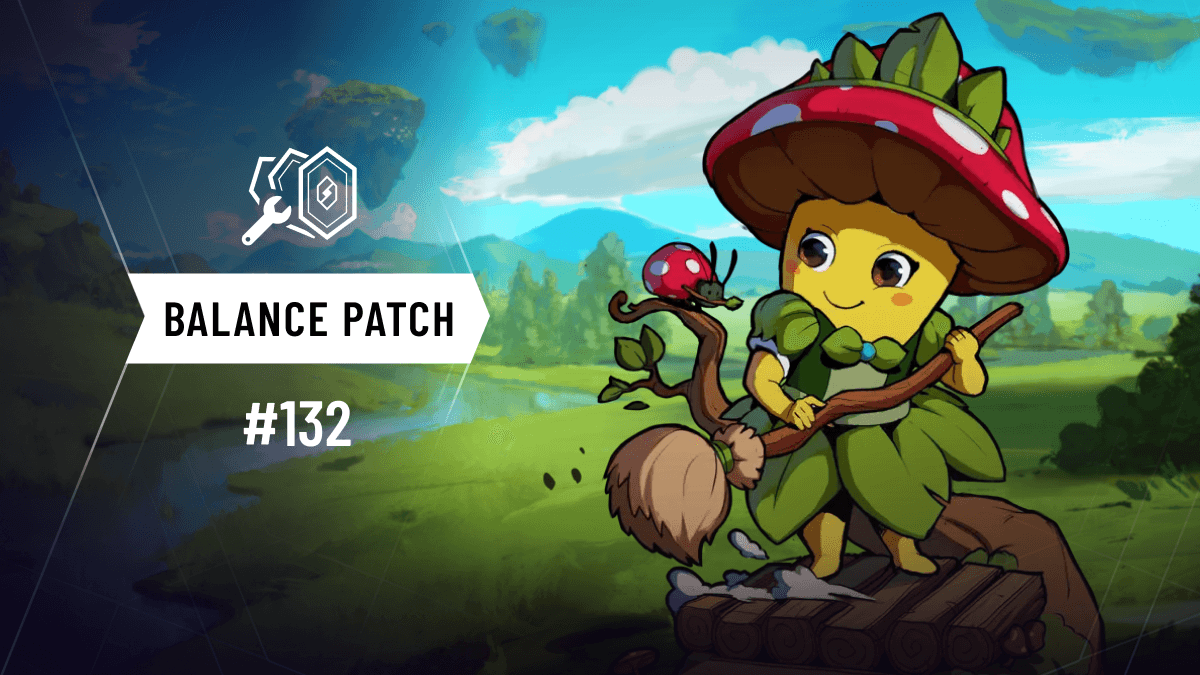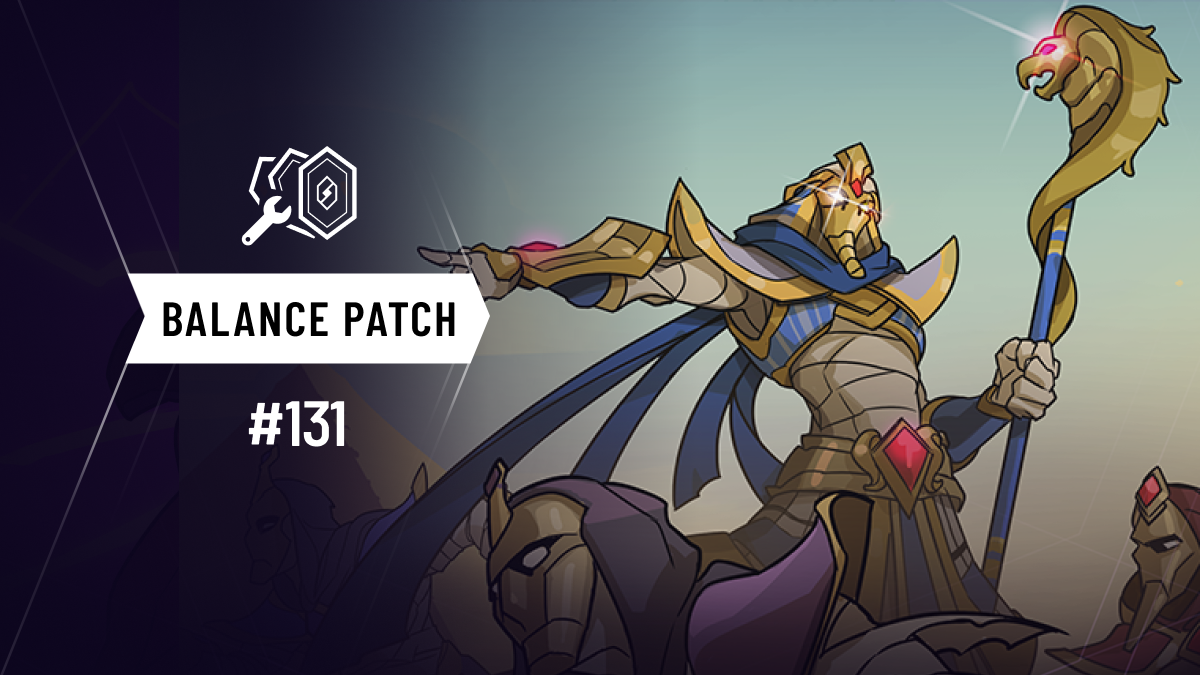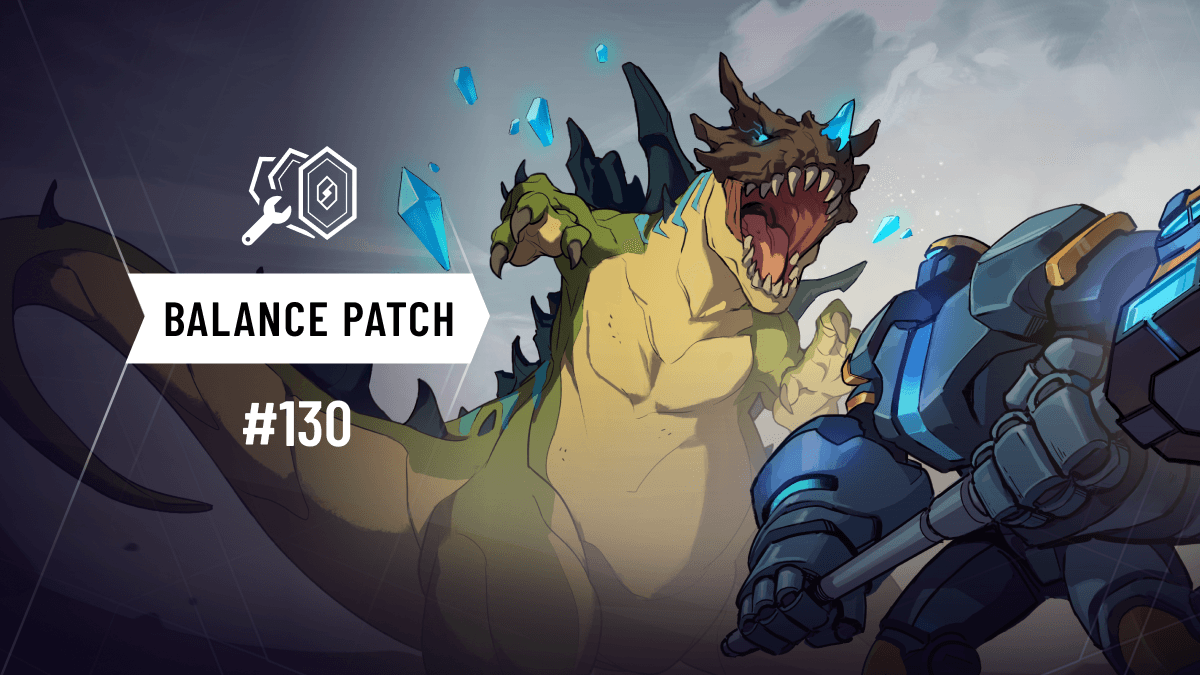Judging the Festival: Clash of Inventors Mini-Expansion Community Review
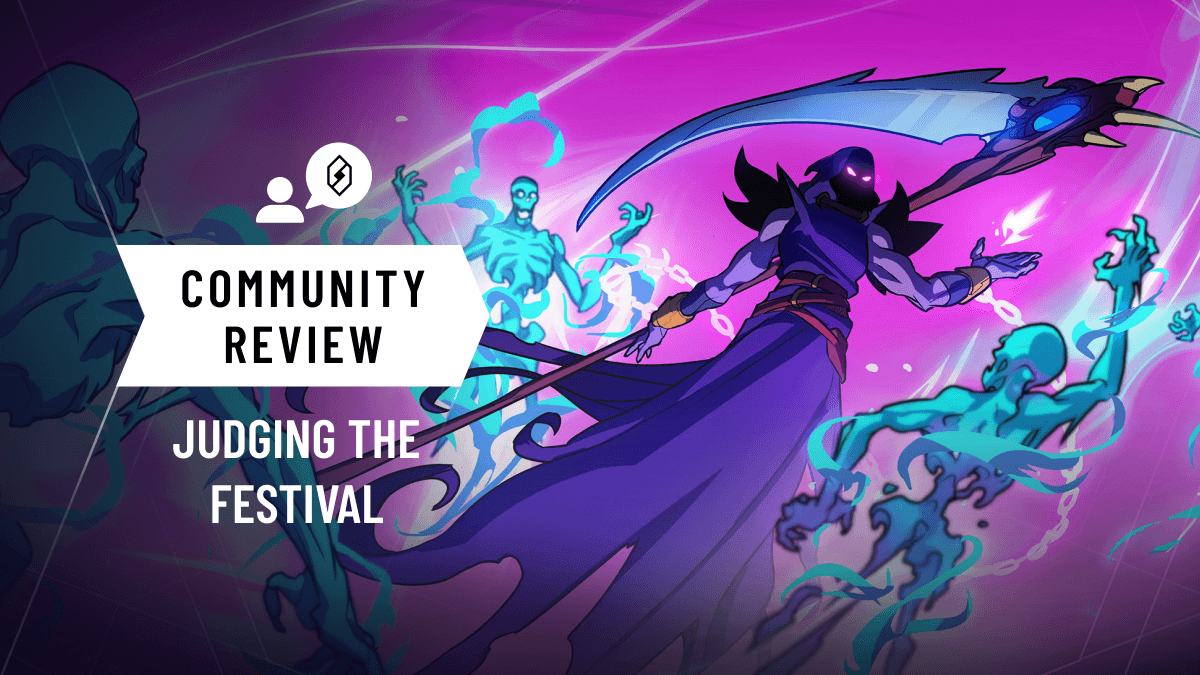
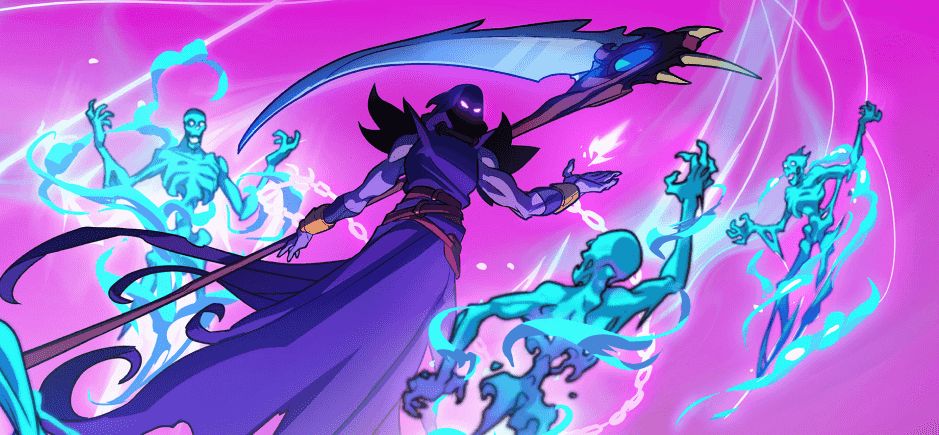
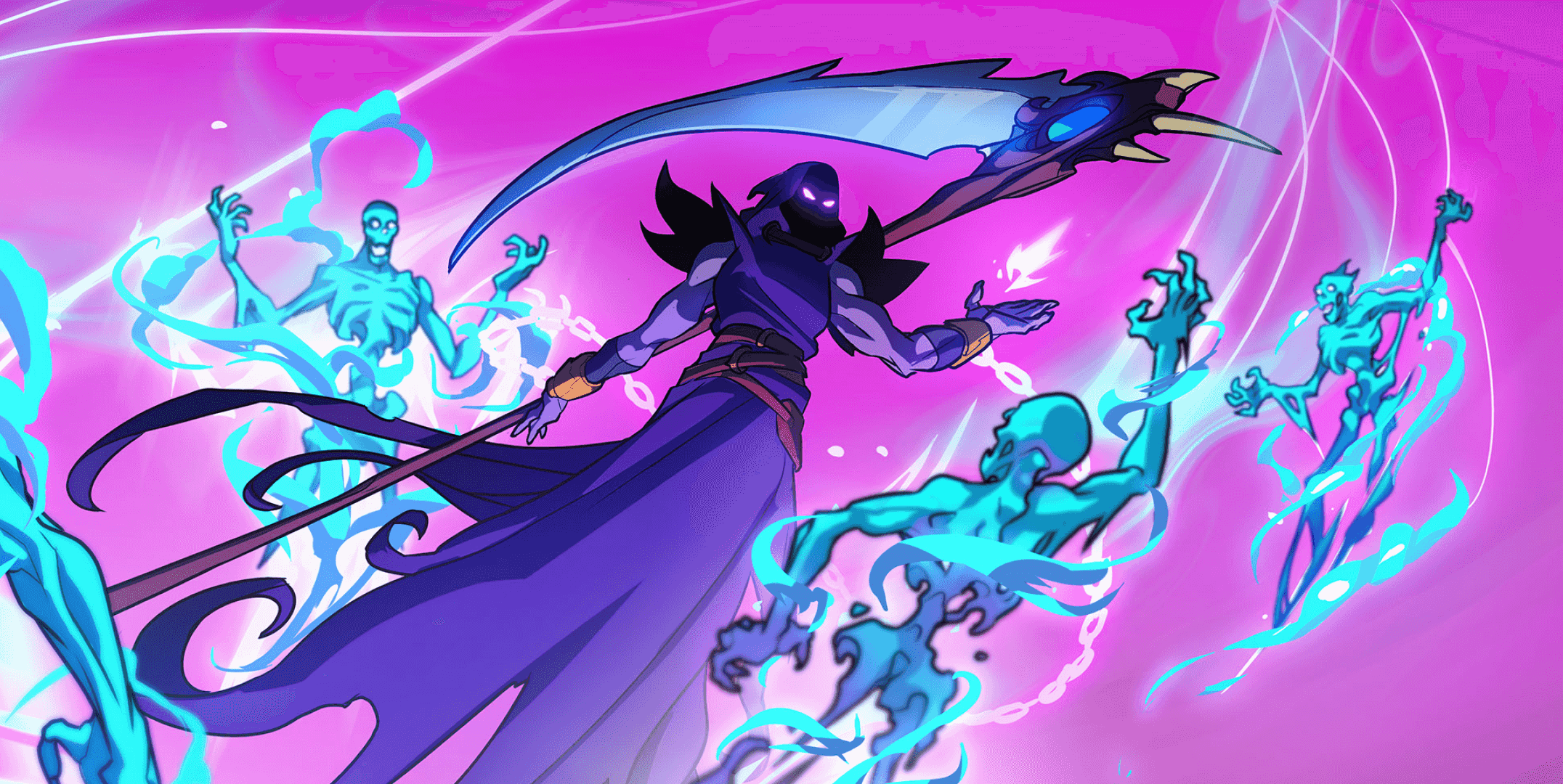
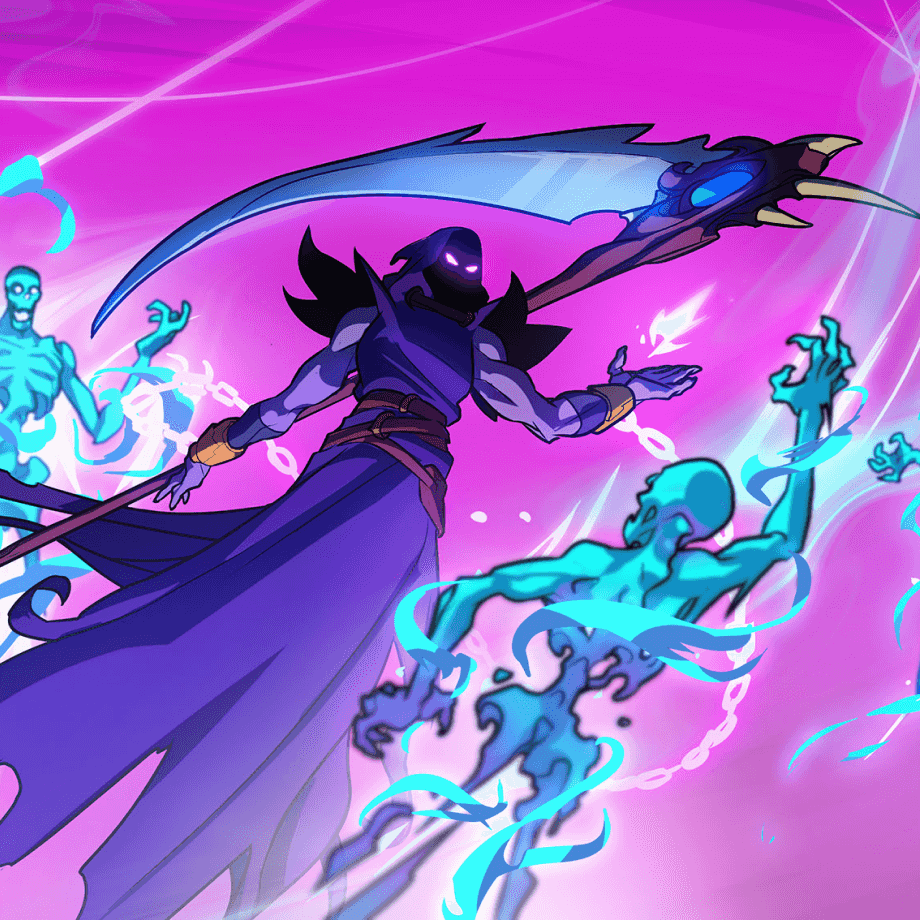
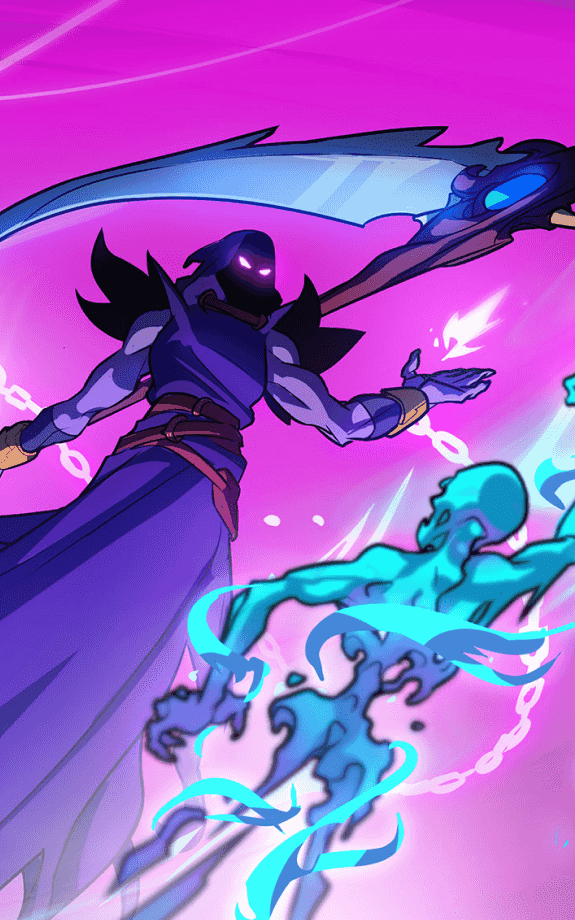
Howdy y’all, JustAddBacon here, weathering the storm of aggro to bring y’all something I’ve been excited about for a while. Since the release of the latest mini-expansion the meta has been wild; as I write this, aggro is ascendant in Mai, Titus is reinvigorating Etherwail based strategies, and Sitti’s having a blast with her new Festival Cannon. So, what better way to celebrate Clash of Inventors than with one of my classic breakdowns! Huh? You can think of approximately 27 other, better ideas? Well, too bad! So without further ado, here’s the breakdown!
Disclaimer: JustAddBacon is a sponsored content creator under the Skyweaver Ambassadors program. Any opinions expressed in the article are strictly those of the author, and do not in any way indicate the policies, positions, preferences, or practices of Horizon Blockchain Games LLC.
Strength
In this expansion, Strength got almost entirely cards supporting large units, albeit in different ways. Options like Crystalceratops and Tune Up provide good enablers for high-cost decks, while Blood of Yxxath provides a strong build around option. All three also work well with Etherwail decks, as Titus players quickly discovered. Hugeify is also an interesting buff option, although it has yet to see much play. However, I don’t think things will remain that way, for reasons we will discuss.
Blood of Yxxath
As a 6-mana 2/2, Blood of Yxxath doesn’t look that useful. Sure, it has lifesteal, guard, and barrier, which altogether make it difficult to cleanly answer, but at 6 mana that fact is rarely helpful. Thankfully for Yxxath, it’s not merely a weakly-statted body with neat traits. On summon, Yxxath draws your lowest-cost unit and gains its stats. Again, this isn’t immediately useful. Among generic units that cost 1-3, average power ranges anywhere from 1-3, with a few exceptions hitting 4 power (Rite Knight, Rubble Devil), and average health is only a bit higher. But what if we cut these units?
Cutting the chaff, so to speak, is exactly what Titus Etherwail does, and makes this card a substantial threat. Here, the goal is to play Etherwail as quickly as possible, play powerful units early, and close the game before the opponent can respond. These decks tend to not run any units below 6 mana (usually Chromeosaur), and are chock-full of overstatted units. These conditions for Yxxath are ideal, and are also what make it a strong Etherwail summon in its own right. Drawing Chromeosaur with Yxxath makes it a 7/7 with Guard and Lifesteal (the Barrier will be overwritten by the Roots from Etherwail), and also puts Chromeosaur into your hand. From there, the stats only go up as unit costs (and stats) increase.
However, this isn’t a perfect strategy, as Blood of Yxxath has another card to compete with. Ether Lemure is another strong unit which provides strong utility for Etherwail decks. Lemure, if you are holding at least one 7-mana card, becomes a 2-mana 3/3 with Dash (already a powerful statline) which also creates a copy of Etherwail. Notably, Lemure adds Etherwail to hand, rather than drawing it, meaning that a dedicated Etherwail deck can get a second use by running Lemure. Unfortunately for Blood of Yxxath though, it doesn’t synergize cleanly with Lemure. Sure, it is possible to just play Lemure first so you never draw it. This is the best case scenario. However, there are other, less favorable situations. Off of an Etherwail, drawing Lemure with Yxxath makes it a 3/5 which, while not terrible, is not great when compared to something like Tiamat or Amaruath. On the other hand, you also immediately draw Lemure in this scenario, so it’s not too bad. In a game where one has a slow start, one may also be forced to use Yxxath early as just a 6-mana unit. Again, drawing Lemure isn’t terrible (a 2-mana 3/3 Dash is just good on its own, never mind the extra Etherwail), but a 3/5 is not very strong defensively. Finally, probably the worst case scenario is using Primal Clash to play Blood of Yxxath first, as it’s much more possible to draw a unit for your opponent that Blood can’t answer. Regardless, in all these situations it may be preferable to draw Yxxath than Lemure itself, so there’s also that to consider.
Crystalceratops
As a child at heart (and maybe mind too), I love dinosaurs. I just think they’re neat. So, when given Chromeosaur, Titanic, and Crystalceretops all in the same prism, all with synergistic effects, of course I was going to love it. As a card, Crystalceratops can serve two roles in a deck. The first that I will be discussing is as an“enabler,” and the second as a payoff. To define an obscure term, an enabler is any card which has a strong effect when used in a specific type of deck, and so makes that deck better with its inclusion. Enablers are a helpful tool for tcgs, as they can take fun but otherwise suboptimal strategies and make them more usable in a competitive setting. Many of the cards Strength received in the mini-expansion, including Crystalceratops, are enablers for decks focusing on high-cost cards. However, I would argue that it’s actually its payoff role that can be more impactful in a game.
At best, Crystalceratops is a 0-mana 5/5. With a cost of 8 mana, this condition is fulfilled when there are four other 7 mana or higher cards in hand. In my view, this is best achieved in two decks. The first of these is Titus Etherwail, for hopefully obvious reasons. Etherwail wants a lot of expensive units, and the spell itself is similarly pricy. Being of the earth element, Crystalceratops also avoids the Roots debuff from the spell, making it a decent target despite its relatively subpar statline (compared to what could also be summoned through Etherwail). The second of these is a relatively more obscure deck, Horik Control, which focuses on recurring powerful units like Titanic, Pharonis, and B.F.R. through effects like Evermore, Scarabot, and Undragon.
In either deck, Crystalceratops can perform a couple of useful roles. For starters, Crystalceratops can be a useful fail-safe option for any high-curve deck. In the generic 7 card opening hand, Crystalceratops appears 23.3% of the time. However, this doesn’t mean much on its own, as Crystalceratops needs to be sufficiently discounted to be useful. In my view, the breakpoint is a reduction of at least 4 mana, or two other 7 cost or higher cards in hand. However, comparisons with other similarly costed/statted options (Puddo, Ifrit, Talenous, Sapphire) lead me to believe that it may need to reach 2 mana before being worth its opportunity cost. Regardless, the option remains, and can easily save a player with a bad hand by buying time.
Additionally, what is perhaps a better use for Crystalceratops is using it to swing tempo with other high-cost plays. As a 5/5, Crystalceratops is not easily ignored. Of course, it lacks guard, but we’ll circle back to that issue. For now, consider: Crystalceratops not being killed means that it can become a 7/7 with shield, or similarly buff another unit you have. Additionally, because Full Bloom is an AOE buff, if your opponent is unfamiliar with your deck, Crystalceratops can also threaten triggering multiple instances of Anima. Granted, Crystalceratops doesn’t have resistance to much removal; basic targeted removal like Incinerate, Hyperbeam, Germinate, and Deactivate turn it off without much trouble. However, there is still a cost to these plays, and this is why I think Crystalceratops is best played as a 0c unit, especially following a sweeper. A good sweeper, like Kha’s Wrath, Burninate, Tiamat’s Rage, or even something simple like Chill can neuter the opponent’s board. Once this is done, the issue of guard is mostly irrelevant- dead units cant hit your face. And, with their board gone and Crystalceratops developed at the same time, the opponent is put in a bind. Should they develop a single large unit without addressing Crystal, Full Bloom allows us to reliably remove that unit, while also buffing Crystalceratops. Of course, they likely won’t follow this course of action, but this threat means that Crystalceratops must be answered. However, as a 0c 5/5 there are no tempo or value efficient answers for Crystalceratops, even the best options are valuable resources that would be better used killing something like a Titanic. So, the opponent becomes stuck. By meeting the condition we’ve created an even stronger swing with our high-cost options than normal. Note that this setup also works with options like B.F.R. and Titanic, hence why I mentioned the Horik list.
All that said, Crystalceratops is still not a perfect card. Stuck in the Strength Prism, players will have to work harder than normal to get the hand size necessary for Crystalceratops to be effective. Cards like Ether Lemure can help with this, but Strength fundamentally lacks generic draws (do note that splashing Wisdom or Heart can help with this). Additionally, Crystalceratops doesn’t provide much utility other than a potential fail-safe/tempo trap. Perhaps your deck can reliably swing with Crystalceratops: could it not be better to just run claw swipe, and not be so reliant on a big swing in the first place? As with any card, there’s an opportunity cost to running Crystalceratops, and one should also remember what they are giving up to run it.
Hugeify
Featuring the fabulous form of a friendly fungus, Hugeify is one of the more devastating buff spells of the mini-expansion, fleshing out the theming of large units for Strength. Rather than thinking of this as a buff spell, though, I think it makes more sense to treat this as a threat + removal option.
To begin, Hugeify does two things: it makes anything an 8/8, and also gives it Dash. The dash utility is only helpful if the unit has been played this turn, but it does open up some applications. For starters, with any cheap unit, Hugeify can function as a moderately expensive removal option that also leaves a threat. Naturally, anything that requires a two-card play, and for one of those to be a unit, is a bit of a difficulty, but the unit used can quickly remedy this problem.
There are numerous options for Hugeify that can allow it to quickly get out of hand. Any cheap floater, like Crypto, Shade, or Icaru, can replace itself easily, eliminating the card disadvantage problem buff spells inherently have. They are also quite cheap, which balances out the mana cost of Hugeify. Other good options are anything that is hard to destroy. Armored options like Scooter, Mechurai, and especially Halcyon can be troublesome to deal with, and Shroud from something like Sky Keeper can make the unit impossible to target. Both of these will have their counters of course (Armor can be beat by strong single-target removal, and Shroud can be beat by aoe effects), but you can punish the opponent if you know they lack these options.
Hugeify need not be exclusively used with its Dash, however. One particularly gross combo involves turn 5 Cloud Guard into Hugeify. Assuming Cloud Guard lives, it almost certainly hasn’t done so without taking some damage. So, now’s the perfect time to Hugeify it, resetting its health to even higher than before while also rendering spent resources wasted. Whether it goes into their face or trades with some miscellaneous unit, you’ve gotten good value, as it will either absorb valuable removal or shut the opponent’s units out of the game. One final unit I find worthy of mention is Vlad. As a pure combo, Vlad + Hugify is quite expensive, especially for an aggro deck. Against slower control decks, however, this may become relevant. Vlad’s summon allows it to pick off a weak unit, or deal Lifesteal damage. With the Dash from Hugeify, Vlad can also kill an additional, much larger unit, clearing the way for an enraged, Lifestealing 8/8 to go directly into the opponent’s face. Pricy? Yes. Practical? Probably not. Flashy as hell? Absolutely.
Tune-Up
Tune-Up is another enabler for Strength, similar to Crystalceratops. However, while Crystalceratops provides a strong tempo play in its best use-cases, Tune-Up solves one of the fundamental weaknesses of Strength, while also being a highly technical searcher. Easily one of my favorite cards of the mini-expansion, Tune-Up is quite possibly one of the most intricately designed cards in the set.
In Clash of Inventors, one of the key design goals for Strength was to give it better support for playing large units and expensive spells. Aside from Blood of Yxxath and Crystalceratops, this is also seen in cards like Ether Lemure, B.F.R., Tiamat’s Rage, Primal Clash, and Chromeosaur. However, as with any strategy in a balanced TCG, it’ll have its own set of challenges. For decks focused on large units and expensive spells, there are two issues I wish to focus on. The most obvious of the two is that expensive cards are hard to use in a match. If an 8-cost card is drawn on turn 5, that option is not available for the next 3 turns. Additionally, such non-options also constitute what are called “dead-draws.” Such draws aren’t necessarily an issue–a hand with 8 cards can probably manage 1 to 2 non-options, but, as the hand gets smaller, dead-draws can increasingly suffocate the control player.
Tune-Up, when drawn and played correctly, solves both of these. As a 2-mana draw 2, Tune-Up has a fantastic rate, comparable to other useful options like Cross Reference and Firesight. This raw draw-power is quite useful for a deck with many high-cost cards. By drawing both a 3 and 4-mana card, Tune-Up provides numerous options until the more expensive cards are online. If played on turn 2, these draws can even become an easy-made curve, buying two more turns (and with them two more draws) until new options are needed. In this way, the card can also function as a fail-safe, similar to Crystalceratops.
Before moving on to Agility, here’s some potent 3 and 4-mana targets to find with Tune-Up
3 mana:
Amaruath’s Will, Chester, Chill, Claw Swipe, Dead Weight, Drone Surge, Glorious Mane, Grover, Jungle Guide, Leonitus, Old Fogey, Run Wild, Scarabot, Sonic Jammer, Whelm
4 mana:
Chainstorm, Dessert Golem, Dreamcalling, Eclipse, Foul Stench, Mind Control, Miss Aya, Oni Smith, Seal of Doom, Steam Knight, Torques, World Tree
Agility
Reckless Racer
I will admit, I’m not the biggest fan of Reckless Racer, but that’s mostly because of my own personal tastes. Reckless Racer is a shiny new 1 mana unit for agility, and mostly performs the role of being a low-power threat and removal tool.
At 1 mana, Racer is rather easy to develop, and can nicely become a 1/3 Dash on the same turn without much issue. Despite the seemingly unimpressive statline, it can be used to snipe away a stray Songbird or Elderwood. A more common use case for Racer is as a 1 mana pseudo-Banner–play it, punch a thing, then jam Racer into it. You’re left with a 1/3 at best, but it can threaten to go 2-for-1 if your opponent plays carelessly. This, in my opinion, is the ideal play-pattern for Racer. Sure, it’s not doing anything flashy, but the math is fine enough for it to be good.
Wu-Kin Scrapper
Moving on to a more dynamic unit, Wu-Kin Scrapper is a potent finisher option for Agility, which also has synergies with numerous cards. Its unique combination of effect, element, and attachment make it versatile, though its relatively lower stats can occasionally become a hindrance. Despite this, it still seems to be one of the more powerful cards of the expansion, and is merely waiting for the right deck.
Scrapper’s effect allows it to immediately attack anything after your hero attacks it. Furthermore, there is no limit on the number of times this ability can be used in a turn, which allows for a number of interesting use cases. Perhaps the most explosive of these is comboing Scrapper with Samya’s Speed, which is another air card in Agility. This is quite convenient, as this means that both can be drawn and discounted with Head in the Clouds. With just one discount, the combo has an initial cost of 6 mana, and involves Scrapper dealing 10 damage to assorted enemies. With one additional mana (7 total), it can deal 15 damage in total. Of course, Samya’s Speed can’t target the enemy hero, but this is still a ton of damage to be put out. Aside from Speed, Honk and Montage can both be useful for pairing in their own right, albeit probably not to the same degree of strength. One final neat interaction with Scrapper involves Hunter’s Howl. Granted, the Fury will only trigger if Scrapper hits face, but it does become a pretty bit of burn damage with minor draw added for good measure. Perhaps this draw could even be used to find Samya’s Speed.
Turboboost
Now this…. This is a card I adore. Turboboost is a 2-mana banner draw in Agility, which also equips the drawn unit with Dash. If that wasn’t enough, Turboboost also features AGI’s “Second Wind” design trait, which means that Turboboost will trigger a second time if your hero is at or below half health. While it’s undeniable that Turboboost is good once your hero is reduced to half health, what remains is the question of whether it is good before then, and if not, if it is good enough below half to be worth running anyways. In my opinion, Turboboost is good enough to run, but only barely, and the type of deck it is in still matters a great deal.
Naturally, Turboboost is best suited to aggro decks–it’s in the Agility prism and aggressive decks are naturally going to activate its condition. So, when can aggressive decks expect Turboboost to fully come online? Well, it depends on how much damage we take. 16 health is, naturally, 16 away from 32, our starting health, so we just need to take ~16 damage to bring Turboboost fully online. Supposing we average 3 damage per turn from turn 1, we can achieve this in around 5~6 turns. However, just because we can achieve this doesn’t mean that we should. Agility decks are disproportionately prone to getting worn down by recoil from stray burn effects, be it the enemy hero’s attack, aoe sweepers like Kha’s Wrath, or Recoil from frequently utilizing your own hero to remove units.
So what does this mean? Well, rather than trying to play to get Turboboost to trigger, I believe it’s generally better to wait for Agility’s natural recoil to enable it for you. As long as you don’t take it in the opening hand (although sometimes this may be necessary) the odds of Turboboost appearing before turn 8 are relatively low. Of course, some draw eventualities like Firesight, Hot Dog, or Zapeta may cause it to appear sooner, but barring those situations we should be fine. Fine to do what? Well, we’re simply using Turboboost as a late-game reload option, not too dissimilar to other options like Blitz or Pandora. Here, the difference is that we don’t have to have a small hand- taking sufficient damage is enough to get Turboboost’s full effect. Once this is done, Turboboost is a massively efficient draw which also sets up your units to become either efficient removal tools or potent wallbreakers; you’ll be hard-pressed to find a unit that doesn’t benefit from being drawn by Turboboost in the late game. If it’s cheap, Boost has made an efficient removal tool that can shred cheap units like Zomboids and Songbirds. If it’s expensive, dash adds a great deal of tempo to the unit, and likely also makes it a big wallbreaker. In either case, Turboboost is great, and this rewarding complexity is why I like it so much.
Searing Rage
As a 3-mana kill option, Searing Rage isn’t a terrible card. However, I will admit that I’m not very big on it. While it may have its uses, I find it to be too regularly outclassed by other options. Of course, any deck can run it to decent effect, I just think that other options will always be preferable.
For starters, for any unit with 2 health, answering with options with banner like Treasure Chest instead is almost strictly better. What about 3 health? Ok, doing better, but Card Sling is probably still better- we get to cycle our deck by 2. “But Bacon,” I hear you saying with exasperation, “Why the hell are we discussing this, Searing Rage is obviously intended for killing large units.” Sure, but it can hit anything, so we want to find the range where it’s a good removal option. Once this is found, we can then compare it with other cards that answer similar things. Moving on to 4 health, we run into Drone Surge, and here’s where the problems begin. With the exception of armor units, Drone Surge can pick off anything with 8 health or less once your hero has dropped to half-health. As discussed with Turboboost, this is rather easy to do, and Drone Surge also provides occasional collateral benefits, instead of the recoil Rage inflicts. Ignoring Drone Surge, just for the sake of example, the first point at which Searing Rage isn’t strictly outclassed by another Agility option starts at 5 health. From here, what does this compete with?
Sunder is a 2-mana option in Strength that deals 5 damage if the target has either armor or guard. Granted, Sunder has a condition, but a great number of units with 5 health or more have either guard or armor. Including 6 health options, which can be killed after Sunder with the Hero attack + some recoil, notable targets include Psyche, Jade Guardian, Geode, Mighty Steed, Meng’Long, and Ifrit. Sure, Searing Rage could also kill all of these, but it would be for one mana more and at almost identical recoil. Also, Sunder can be thrown into the opponent’s face, or just deal 2 to a weak but dangerous unit, like our resident good-boy Fox Familiar.
It is worth mentioning, though, that Sunder is located in another prism. However, I don’t think this is really relevant, as I’ve actually picked one of the weakest hard-removal options that still generally outclasses Searing Rage. Heart has Dead Weight, which will regularly delete things without any recoil, and Intellect has a massive range of options, including Deactivate, Germinate, Shrink Ray, and Defragment. Take your pick, they’re all better. Wisdom is perhaps the only debatable prism, but with such generically strong removal as Incinerate and Grasping Maiden I don’t think it’s a sustainable position.
Wisdom
Wisdom perhaps received the most eclectic bundle of cards in this expansion, although all are interesting in their own right. For its theme with large hand-sizes, Wisdom has gained two payoffs, an enabler, and also a buff spell of all things. Definitely an odd bundle of cards to keep your eyes on.
Fatcat Banker
In testing, this card was wild. It is probably still rather good, and merely suffers from the lack of players willing to seriously play Wisdom. To make a complex card simple, Fatcat can do two things, and sometimes both at once. First, Fatcat is an expensive punish against any opponent without an answer. If they don’t have units to trade with or an immediate removal spell like Mortal Blow, Fatcat will begin to quickly generate card advantage. Of course, some aggro decks may be able to ignore Fatcat, but Wisdom has a couple of potent healing options it should now be able to find thanks to our busy banker. Aside from being a punish, Fatcat banker can also serve as a payoff for having a large hand, as its secondary effect quickly amasses board control. Rapidly accumulating 3/3 drones is a surefire way to shove an aggro player off the board, and also requires even further resources to answer.
Notably, Fatcat Banker’s first effect also works towards its second, although this isn’t necessarily the best way to use it. Wisdom has other great draw tools, like Hydrate, which can be used to fill the hand after Banker has been played. Naturally, this strategy will incur an overdraw, but for a board of 3/3’s you’re probably fine with that. Another place where Fatcat’s effect can work surprisingly well is in Etherwail decks. When summoned with another threatening unit, like B.F.R. or Amaruath, Fatcat’s effect can make a Catch-22 for the opponent. If they have limited resources and can’t answer both, they may be forced between Fatcat and the other threat.
Lorekeeper
This card is funky and unknown. Consequently, I don’t have much to say on it. Whatever combo might involve it, there’s the issue of needing a full hand to use. This can be solved with Hydrate, of course, but there’s also the question of what to even play with it. Curious is another thought, but something else to be considered is the cost of comboing. Lorekeeper costs 6, so even if you reduce a 10-mana spell to 1, your net gain is only 3 mana. If you Hydrate to activate it, the net reduction is 2. Whether or not this card will ever be good remains to be seen, but it’s certainly one to watch.
Stoke
Stoke is another card that people aren’t quite sure what to make of, albeit for different reasons. Stoke follows the path of one of Wisdom’s core design themes, that being symmetry. However, the nature of Stoke’s symmetry is odd, as it has three symmetrical effects which grant asymmetrical payoffs.
First, Stoke draws both players a card. Since we played Stoke, we end up with a net gain of 0 cards, while our opponent gets a net gain of 1. Secondly, both players gain 3 health. In a control mirror, this is generally inconsequential, but in an aggro mirror this disproportionately benefits the control player. Finally, the most curious part of Stoke is the symmetrical ramp. Due to the nature of the card, your opponent will always get to take advantage of the ramp first, and after you’ve spent one mana to activate it. So, when is Stoke good? Well, it should be when the utility of ramping - utility of opponent’s ramping + utility of healing > utility of opponent’s draw - utility of your own draw + utility of opponent healing. Or, when
Ui(ramp) - U-i(ramp) + Ui(healing) > U-i(draw) - Ui(draw) + U-i(healing)
If you aren’t quite sure what to make of this equation, don’t worry, no one is. But, what I think this spits out is essential in that if your deck is better than your opponent’s, you will benefit from playing Stoke, as your utility will just generally be greater than the opponent’s. However, the difference must be great enough to overcome the disutility of ramping the opponent, which is probable to be rather large against an aggressive deck. In a control mirror, I’m unsure of whether you want this card. On one hand, it accelerates your gameplan and gives you a consistency boost. On the other hand, Stoke could’ve been any other finisher or draw option, and also gives your opponent a +1 in card advantage.
Shield Bash
Finally finishing our foray into Wisdom, we have Shield Bash, a rather irregular buff option for the prism. I say irregular as Wisdom generally lacks buff options, although Shield Bash seems to change this trend.
In my view, Bash has two use cases: generic buff and otk (one turn kill) tool. As a generic buff it’s probably comparable to Dawn Blade; both grant Shield and raise a unit's power. Interestingly, Shield Bash is the more volatile option of the two, as its buff can be as high as +6/+1 (Earth Warden) or + 7/+1 (Kha Meht). This makes it a potentially powerful trading tool, albeit at the cost of requiring the unit to already be on board. The second use case is as an otk tool, alongside Meng’Long and Beloved. The combo is rather simple, just play Meng’Long, buff it with Beloved, then smash the overstatted dragon into the opponent’s face. The issue is that this isn’t especially reliable, nor what a Wisdom deck generally wants. With just Meng’long on board, Beloved generates an extra 3 points of damage to the opponent’s hero. Sure, each unit will add one extra damage, but there are a number of other burn options like Festival Cannon, Wall of Dead, or Flame Phoenix. This doesn’t mean that the card is terrible, but I don’t think it’ll be especially useful as an otk tool in the near future. As a buff option however, it may be one of the best ones in the game.
Heart
In Clash of Inventors, Heart received a wide array of new options, ranging from handbuff to burn to even a new top end spell. While it may not be the prism to make the biggest splash with the expansion, Heart has certainly gotten some interesting new tools which are sure to shake up what the prism can do.
Mechaboid
Before anything else, I want to make notice of the card’s lore. “It was submitted anonymously with the title ‘the price of your sins.’ Neutralize it and burn the remains.” We already know that more things with zomboids are bound to happen with the upcoming Hexbound Invasion expansion, be it either from the roadmap or the now-infamous Matta Moment leak, but this card as a preamble is straight up disturbing. The obvious suspect for it is of course Sitt (she’s cybernetically enhanced other units like Vlad and Timber), although that doesn’t mean that it must be her. Regardless, the art is amazing, the contents disturbing, and the unit is mechanically interesting.
Speaking of mechanics, Mehcaboid has a rather interesting play pattern, where it’s essentially a delayed buff but also tempo efficient. As a 1-mana 1/1 with wither and armor, Mechaboid is more suited for trading into other units than just rushing the opponent’s face. At one power, it’s never going to be that threatening, but the wither can be used to set up a better trade with another unit. Once it's dead, however, Mechaboid provides a pretty solid buff to a unit in your hand. +2/+1 is nothing to sneeze at, and, if paired with other aggressive units like Speedster, it can quickly escalate. Outside of aggression, one extra health can frequently push a unit outside of range for its relatively efficient removal counterparts, like Fox Familiar vs. Strike Down, or Chester vs. Banner. In any case, the buff is certainly handy, and makes up for the unit’s slightly subpar stats.
Festival Cannon
This card received a lot of attention during testing, but I think many are happy with where it is now. At first glance, Cannon is horrible. 6 mana for an ember wolf is just downright depressing, and the attached Scorch does little to help. However, Cannon has quite possibly one of the strongest death effects in the game, which instantly deals 9 damage that can target the opponent’s face. The trick, then, is to actually pull it off, which is where Cannon gets quirky. Since most of its value lies in its death effect, it’s easily interruptable by dusting effects, either from cards like Chomp, Kha’s Wrath, Raise Arms, or Righteous. Thankfully, the attached Scorch can be used to target the cannon, and prevent most opportunities for dusting. Additionally, Cannon can also be copied by numerous effects, like Dual Boot and Clone Army, or have its effect triggered by external sources like Molten Heart, Phoenix Plume, and Grave Roil.
With all of this in mind, one must now focus on Cannon’s targeting rule. Cannon specifically targets the enemy with the lowest health, which means that it can’t be fired aimlessly. Should they not be cleared, miscellaneous enemies like Songbirds, Zomboids, and Elderwoods will absorb the cannon-fire, and dramatically reduce the card’s efficiency. To solve this issue, pairing it with aoe sweepers like Frigid Blizzard and Seal of Doom can be helpful. In these instances, one can even use the Scorch to either secure a clear on a unit, or to put an extra two points of damage into the enemy hero. Finally, one should know that once the opponent’s health is low enough, Cannon will always lock on to them, regardless of the units they play. Should you knock their health below other units, like an Undragon or Kha Meht, Festival Cannon can easily bypass those units and their outsized healthpools to secure lethal.
Boon of Nettles
This card is a fun addition to the prism, providing Heart with a way to brawl for board despite its units generally having weaker stats. Additionally, the card splashes very well with a lot of other decks, which helps it function both as a buildaround and as a general utility option.
To begin, we need to evaluate how good +1/+1 is. As we saw with Mechaboid, even a small buff to a unit in hand can have a big impact. Consider the Whipvine that may be added to your hand with Boon’s use. As a 1-mana 1/3 it’s in line with most other 1-mana units, but the lack of draw power or removal potential weakens its use (consider Fox Familiar as an alternative). As a 2/4, though, Whipvine is well above the curve for any other 1-mana unit, and is much closer to a 2 or 3 mana unit’s stats. Certainly, we must also consider that Boon has a 2 mana cost, and Whipvine is only drawn if an ally unit has died, but we should also remember that Boon affects the user’s entire hand. If we count in our hand three other units, suppose they are generic 1-mana units, Boon turns 3 1-mana units into ~ 4(assuming Whipvine is added) 2.5 mana units of stats, for a net cost of 6. If each of our 1-mana units can now be thought of as a 2.5 mana unit, the net cost of 6 is 4 less than where the normal cost would be (4 x 2.5 = 10). Is this a perfect analogy? No, not at all. Stat increases have a diminishing return as you scale to larger units –an increase of +1/+1 matters a lot less for a 7/7 than for a 1/2– and this example is helpful for illustrating where Boon can be helpful.
One deck that I want to highlight the usefulness of Boon of Nettles is Sitti Uno. Aside from being able to take advantage of the 1 mana unit generated by Boon, Sitti Uno gains a lot of collateral benefits from the spell. Random Microndrones in hand, be it from various sources like Lapin Microneer, can benefit immensely from the spell, as can the assortment of 1 mana units that every Unophobia-focused deck runs. Additionally, mainstays in the Mai build like Torques, Fren-Z, and Orion all have armor, which allows them to milk the buff for even more advantage. Fren-Z in particular is quite nasty with Boon, as its acquisition of Wither allows one of the copies to more easily survive after the first one has worn down a particularly large target.
Rising Doom
A rather expensive spell for Heart, Rising Doom is a powerful way for aggressive Heart players to force their opponent out of the game. However, its high cost makes it difficult to use, and means that it can sometimes be suboptimal compared to more traditional removal like Kha’s Wrath.
Summoning two Doom Shroom is a tad overlooked in my opinion, as the usefulness of Wither is generally not considered to be very high. However, I think Rising Doom is a bit better than given credit for. For starters, it pairs very nicely with a lot of other things, emblematic of Heart’s high versatility. Options like Chill make the shrooms a fair bit bulkier after crashing through the opponent’s units, as do other generic Wither triggers from things like Allbane or Zomboids. Aside from this, the Wither of the Doom Shrooms themselves can also set up future plays with things like Dash, again increasing the survivability of one’s own units. However, all of this neglects something important about Rising Doom, which is when it is generally played in a match. Given its removal-esque nature, Rising Doom can frequently be expected to be forced out on 8 to answer the opponent’s board, for better or worse. While they can certainly pick off some weaker things, if the opponent has even mid-sized units the shrooms will survive with little health, if any. This isn’t too bad since their death effects will weaken most opposing boards, but it does limit the defensive utility of the spell. If it can be played aggressively, though, the tempo benefits are bountiful.
Intellect
Our final prism for evaluation, Intellect has perhaps received the most notorious cards of the mini expansion, with two of its four additions receiving nerfs in the subsequent patch cycle. However, this is certainly not to say that any of its new options are lacking, or that some of them won’t become increasingly relevant in the future.
Big Friend
While it may be big, this unit is anything but friendly if you’re on the receiving end of it. With 7/7 of stats, Big Friend is dangerous at any stage of the game. Additionally, its effect discounts itself far quicker than what one might expect, especially if players are making use of cards like Drone Swarm, Drone Surge, or Grover. As a breakpoint, 7 health is a bit obscure, although it is enough to survive a lot of powerful damage-based removal like Chomp, Kha’s Wrath, and Tiamat’s Rage. Naturally, then, the biggest threat for this unit is cheap kill-commands, like Germinate and Deactivate. So, similar to Crystalceratops, Big Friend can easily work as a tempo trap and also punish, lending itself well to arriving far sooner than the opponent was prepared for. Outside of this role, however, it doesn’t provide much utility to its deck (not like it needs to).
Bit Shifter
Perhaps one of the more forgettable units of the mini-expansion, although not one that’s entirely irrelevant. While it’s hard to say for certain, perhaps what holds Bit Shifter back the most is the awkward math it has to deal with. Assuming it trades into whatever it targeted with its summon, Bit Shifter will always remain as an 6 mana x/4 guard. Considering that many, if not most, units have power equal to or greater than their health, we can also consider Bit Shifter as having a simple “kill a unit” effect with some minor limitations. So, at what point is Bit Shifter good? Mortal Blow is at 4 mana, so we may also consider this as a 2-mana unit with “Conditional Mortal Blow” attached. As a 1/4 the card is neat, but an Intellect deck probably gets more utility out of running Encapsulate instead. As a 2/4 the statline is a bit better, and 3/4 is probably where the card enters the viable range.
However, one unfortunate fact for Bit Shifter is how the power curve is spread out through the game. While it is true that many units have power equal to or greater than their health, this is less true for large, tanky units, which are the ones you most want to destroy with Bit Shifter. Among popular Etherwail targets, neither B.F.R. nor Amaruath or Dracomantium can be removed with Bit Shifter. The same also holds true for Tiamat and Genesis Avatar. So, while the math might look plausible for the card, its specific condition actually greatly impairs its ability to check what it wants to–massive, dangerous units. For this reason, even though it’s essentially Mortal Blow on a stick, Bit Shifter sees little play.
Overdrive
Were this a meta report (yes, yes, I haven’t forgotten about them), Overdrive would probably be an entire paragraph, if not a page. The impact this card has had on the meta simply can not be overstated. As a spell, 6 mana for a relatively weak aoe buff seems low-impact, even with the free Micron Drone. However, as the past two weeks have shown, this is anything but the case.
As I’ve shown numerous times in this article, even a +1/+1 buff can be quite considerable if placed in the right spot. Overdrive places it absolutely perfectly, and is even set up in such a way that makes it quite hard to mess up. Overdrive’s buff is what I call an “aura” effect. That is, it is active for an unspecified duration, and is either partially or fully global in effect. What this means is that Overdrive can set up combos over a large number of turns, such as with Torques or Drone Surge. Additionally, due to the nature of the spell, Overdrive is wholly unstoppable once it’s been played. This means that the counterplay options for the spell are limited. Opposing players can either try to rush in such a way that the spell is too great of a tempo loss, or run enough efficient removal to withstand the swarms of cheap, over-statted 1-mana units. Neither of these strategies are particularly easy, especially against a deck which focuses on having many cheap units.
Additionally, Overdrive complements many of Intellect’s aggressive approaches rather nicely. For an Unophobia deck, Overdrive substantially increases the power of the deck’s late-game, something that has historically been a bit of a problem for the deck. Additionally, the spell’s effect also buffs units that you have on board, increasing the pressure applied by your 1 mana units. This threat makes it harder for your opponent to ignore your units and set up their own board, thereby providing some minor passive tempo. All-in-all, the card is powerful, and its mere existence improves the Intellect prism.
Ethersurge
Last, but certainly not least, is Ethersurge, a curious new spell added to Intellect that hasn’t quite done much yet. As it is, the utility of the card is rather easy to understand: It’s the value of drawing 2 spells, plus the value of each of those spells if played on that turn, minus the cost of Ethersurge. If you’re playing two 4 mana spells, you’re probably happy enough with this, although that fact hasn’t done much for the card.
So why has a card with such a powerful effect not taken off? Well, I think there’s a few reasons. First, there’s not many spells that are actually good enough to run with this. To be a good target for Ethersurge, the spell probably needs to be generically usable (i.e. not Prismata, Grave Roil, or Floodwater), and at least one of the two need to address the opponent’s board. However, if you hit 2 spells that address the opponent’s board, one of them will likely go unused, which is lost value. Obvious candidates for Ethersurge are then spells like Kha’s Wrath, Chomp, Overdrive, potential ramp like Gigabloom and Gift of Aya, and also Unophobia. However, the utility gained from this one combo is probably not going to be worth the loss from cutting cheaper utility spells, especially Intellect’s cheap kill options like Germinate. So, until the spell gains some higher cost targets, it is likely not going to see much play. Whether or not that happens, though, only time can tell.
Conclusion
So, what did you think? Did I get everything right? Rhetorical question, of course I did! But, if you disagree for some strange reason, feel free to hit me up in either the comments, official discord, or in the Fox Fang server itself. I’m happy to answer questions at any time. Special thanks for Horizon for partnering with me on this article, as well as my lovely editors, without whom I would be far more miserable. Until next time, see y’all in Sky!
Join the Discussion! 🎙️
To chat with the rest of the community and the Horizon team, join our Discord server! Subscribe to our subreddit to share your ideas, and be sure to follow us on Twitter or Instagram! Also—we’re on TikTok too!
Skyweaver is in Open Beta. You can play for free at play.skyweaver.net or download the game on Windows, Mac, Linux, IOS, and Android!

Recent Posts


